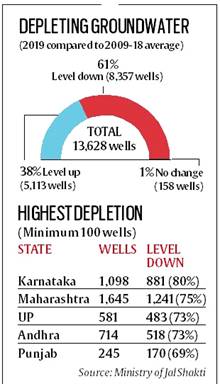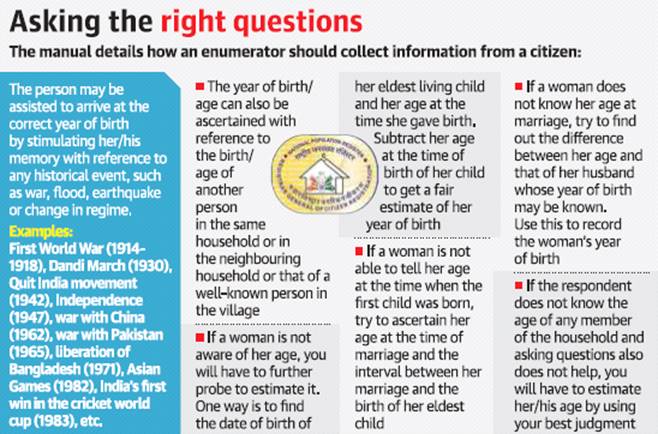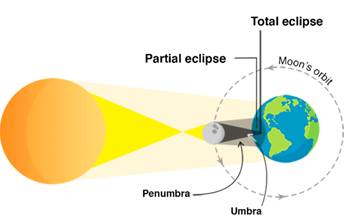



SOCIETY
Mind the gap: On gender gap
Background information:
- The World Economic Forum’s Global Gender Gap Index 2020 has been released.
- India has dropped four points from 2018, to take the 112th rank on the Index.
- It also raises questions over government policies that are designed to promote equal access to opportunities and resources for both genders.
About the Index and its findings:
It measures the extent of gender-based gaps on four key parameters :
- Economic participation and opportunity
- Educational attainment
- Health and survival
- Political empowerment
- It measures gender-based gaps in access to resources and opportunities in countries, rather than the actual levels of the available resources and opportunities.
- India has lost four positions as some countries ranked lower than India have shown better improvement.
- The country has reportedly closed two-thirds of its overall gender gap, with a score of 66.8%, but the report notes with concern that the condition of women in large fringes of Indian society is ‘precarious’.
Concern over Indian gender gap:
- Economic gender gap, with a score of 35.4%, at the 149th place, among 153 countries and is down seven places since the previous edition.
- The participation of women in the labour force is also lowest among the world.
- The female estimated earned income is only one-fifth of the male income.
Concern over India’s gender divide in health & survival:
- It is determined largely by the skewed sex ratio at birth, violence, forced marriage and discrimination in access to health.
Way Forward:
- There is need to engage intimately with all aspects indicated by the Index to improve the score.
- Set targets to reduce the gender gap in the near future.
- Drastically scale up efforts it has introduced to encourage women’s participation and increase opportunities for them.
Reference: https://www.thehindu.com/opinion/editorial/mind-the-gap/article30397529.ece
Explained: Atal Bhujal Yojana — Why a scheme for groundwater
Prime Minister Narendra Modi launched the Atal Bhujal Yojana or Atal Jal.
About the Scheme:
- Atal Jal is a World Bank-funded, central scheme aimed at improving groundwater management.
- Atal Bhujal Yojana will be implemented in seven states – Gujarat, Haryana, Karnataka, Madhya Pradesh, Maharashtra, Rajasthan and UP over five years from 2020-21 to 2024-25.
- If the scheme meets its objectives in water-stressed areas, it will be extended to other parts of the country.
Scarcity of Groundwater in India:
- India accounts for 16 per cent of the world’s population living in less than 2.5 per cent of the global area, and has just 4 per cent of the global water resources.
- According to the Central Water Commission (CWC), the estimated utilisable resources are 1,122 billion cubic metres per year — 690 BCM per year surface water and 432 BCM per year replenishable groundwater.
- According to the CWC, per capita availability in the country will decrease from 1,434 cubic metres in 2025 to 1,219 cubic metres in 2050.
- By CWC benchmarks, a water-stressed condition happens when per capita availability is less than 1,700 cubic metres and a water-scarcity condition when per capita availability falls below 1,000 cubic metres.
- Basins of the Indus (up to the border), Krishna, Cauvery, Subarnarekha, Pennar, Mahi, Sabarmati and east-flowing rivers, and west-flowing rivers of Kutch and Saurashtra including Luni are facing water scarcity conditions.
Groundwater situation:
- The current annual groundwater extraction is 249 BCM, the largest user being the irrigation sector.
- Compared to the decadal average for 2009-18, there has been a decline in the groundwater level in 61% of wells monitored by the Central Ground Water Board (CGWB), according to a reply by the Jal Shakti Ministry in Parliament recently.
- The highest depletion has been in Karnataka (80%), Maharashtra (75%), Uttar Pradesh (73%), Andhra Pradesh (73%), and Punjab (69%).

Role of CGWB:
- The CGWB has classified the country’s assessment units (blocks, taluks, mandals etc) into safe, semi-critical and over-exploited in terms of groundwater resources.
- In the north, more than 60% of the assessment units in Delhi, Punjab, Haryana and Rajasthan are either over-exploited or critical.
Working of the Scheme:
- The focus will be on arresting the rate of decline of groundwater levels as well as water consumption.
- The scheme will seek to strengthen the institutional framework and bring about behavioural changes at community level for sustainable groundwater resource management.
- It envisages community-led Water Security Plans.
- There has been a Groundwater Management and Regulation scheme to manage the country’s groundwater resources since 2013.
- Concepts such as ‘Water User Associations’ and Water Budgeting will be introduced.
- Better performing districts and panchayats will get more funds.
POLITY
NPR: house-to-house verification planned
Government proposal to update the existing National Population Register, which already has an electronic database of more than 119 crores residents, by verifying the details of all respondents through house-to-house enumeration, according to an official manual on conducting the fresh NPR exercise
About NPR:
- The National Population Register (NPR) is a register of the usual residents of the country.
- It contains information collected at the local (village/sub-town), sub district, district, state and national level under provisions of the Citizenship Act, 1955 and the Citizenship (Registration of Citizens and Issue of National Identity Cards) Rules, 2003.
- The process of updating NPR will be carried out under the aegis of the Registrar General and ex-Officio Census Commissioner, India.
Usual resident of India:
- Is a person who has resided in a local area for the past six months or more, or a person who intends to reside in that area for the next six months.
Information collected in NPR:
The objective of the NPR is to create a comprehensive identity database of every usual resident in the country. The database would contain demographic particulars such as:
- Name
- Relationship to head of household
- Father’s name
- Mother’s name
- Spouse’s name (if married)
- Sex
- Date of birth
- Marital status
- Place of birth
- Nationality (as declared)
- Present address of usual residence
- Duration of stay at present address
- Permanent residential address
- Occupation
Educational qualification

About Updation of NPR:
- Data for the NPR was first collected in 2010, and updated in 2015.
- Next phase of NPR will be conducted along with Census exercise between April to September 2020.
- All government officials, will “modify and correct the demographic data items”.
- In cases where date of birth or age was not known, the enumerator could help the respondent by “stimulating her/his memory” with reference to historical events well known in the area such as a “war, flood, earthquake, and change in political regime.
Reference: https://www.thehindu.com/news/national/npr-house-to-house-verification-planned/article30405387.ece
SCIENCE
When the moon blotted out the sun

Solar Eclipse:
- A solar eclipse occurs on a new moon day when the Moon comes in between the Earth and the Sun and when all the three celestial bodies are aligned.
- An annular solar eclipse will occur when the angular diameter of the Moon falls short of that of the Sun so that it cannot cover up the latter completely. As a result, a ring of the Sun’s disk remains visible around the Moon.
- The safe technique to observe the solar eclipse is either by using a proper filter like aluminized Mylar, black polymer, welding glass of shade number 14 or by making a projection of Sun’s image on a whiteboard by telescope.

Is it safe to view solar eclipses?
- NASA maintains that the Sun can be viewed safely using the naked eye only during a total eclipse, while during partial and annular solar eclipses, the Sun should not be viewed without proper equipment and techniques.
- Not using proper methods and equipment for viewing can cause permanent eye damage or severe visual loss, it says.
- Safety equipment includes eclipse glasses and using appropriate solar filters for covering binoculars, telescopes and cameras.
DEFENSE
Army Chief says students leading crowds for arson, violence is not leadership
Students leading crowds to carry out arson and violence is not leadership, outgoing Army Chief Gen. Bipin Rawat said.
His statement:
- Leaders are not those people who lead people in inappropriate directions. Leaders are those who lead people in the right direction.
- Leadership is all about leading and the complex thing about it is “when you move forward, everybody follows.
Civil –Military relations in India:
Constitutional Framework:
- In List 7 of the constitution, the Government of India has been assigned responsibility for ensuring the “Defence of India and every part thereof”.
- The Supreme Command of the Armed Forces rests with the President.
- The responsibility for national defence rests with the Cabinet.
- Ministry of Defence provides the policy framework and wherewithal to the Armed Forces to discharge their responsibilities in the context of the defence of the country.
- The principal task of the Defence Ministry is to obtain policy directions of the Government on all defence- and security-related matters and see that these are implemented by the services headquarters, inter-service organisations, production establishments and research and development organisations.
- The Raksha Mantri is the head of the Ministry of Defence.
Definition of Civil-Military relations:
The term “Civil–Military Relations” refers broadly to the interaction between the armed force of a state as an institution and the political class and its machinery.
Success of CMR:
- No Military coup.
- Successful transition of political powers.
- Working of military personnel under guidance of civilian leaderships.
- Indian military is considered as most discipline and trained militaries across the world.
Challenges in CMR:
- Military is kept out of strategic decision-making process.
- The bureaucracy has arrogated to itself a massive role – one that is not practised around the globe.
- It has given a fillip to a bureaucratic system, which seeks to exercise control over the military by isolating soldiers from their political masters through a layered tangle.
- Creation of a military leadership insular in its thought process.
Way Forward:
- Senior military officers should be given exposure in government bureaucracies and be made a part of the strategic planning process.
- A certain amount of tension between the principal (the political class) and the agent (the military) is inevitable; creative tensions, as evident in civil-military disputes across the globe, may be helpful in refining existing structures and responses.
PIB
WCD Ministry Invites Applications for Nari Shakti Puraskar 2019
Ministry of Women and Child Development has invited applications for Nari Shakti Puraskar for the year 2019. The National Award is given annually to individuals, groups, institutions in recognition of their exceptional work towards the cause of women empowerment, especially for vulnerable and marginalized women.
About the Nari Shakti Puraskar:
- The National Award is given annually to individuals, groups, institutions in recognition of their exceptional work towards the cause of women empowerment, especially for vulnerable and marginalized women.
- Nearly 40 Nari Shakti Puraskars will be given away on International Women’s Day observed on 8th March 2020. The President gives away the awards.
- The award was formerly known as the Stree Shakti Puraskar. It was instituted in the year 1991.
- The award carries a cash prize of rupees one lakh and a citation.
- For the year 2012, the award was posthumously bestowed on the 2012 Delhi gang rape victim named ‘Nirbhaya’.
Student evaluation plays a crucial role in improving the quality of Higher Education in the country: HRD Minister
Union Human Resource Development Minister launched the 5 documents developed by UGC covering the 5 verticals of Quality Mandate.
Details about the initiative:
- These five documents cover evaluation reforms, eco-friendly and sustainable university campuses, human values & professional ethics, faculty induction and academic research integrity.
- To improve the quality in Higher Educational Institutions, University Grants Commission (UGC) has adopted the Higher Education Quality Improvement Programme Mandate.
- The minister mentioned SATAT – the Framework for Eco-Friendly and Sustainable Campus development in Higher Educational Institutions. This encourages universities to adopt policies to enhance the environmental quality of the campus.
- UGC has also developed a policy framework- “Mulya Pravah – Guidelines for Inculcation of Human values and Professionals Ethics in Higher Educational Institutions”.
- The minister also mentioned about the Guidelines for Guru-Dakshta – A guide to Faculty Induction Programme (FIP) with its main objective to sensitise and motivate the faculty to adopt learner centred approaches, ICT integrated learning and new pedagogic approaches to teaching-learning, assessment tools in higher education.
Dr. Harsh Vardhan inaugurates 2nd Edition of “Eat Right Mela”
About the Eat Right Mela:
- The ‘Eat Right India’ movement was launched by the Food Safety and Standards Authority of India (FSSAI) to usher in a ‘new food culture’ by nudging businesses and consumers to adopt safe, healthy and sustainable food practices and habits.
- As part of the Eat Right India movement, the ‘Eat Right Mela’ was conceived to engage, excite and enable citizens to eat right through an infotainment model.
- Eat Right Melas have been envisioned for massive outreach to build awareness on safe food and healthy diets through an interactive and informative model.
- It is being held in Delhi.
- In addition to showcasing street foods from all over the country, it consists of entertaining yet informative activities such as food quizzes, talks by dieticians and nutritionists, live cooking demonstrations by chefs, discussions by leading food experts and exhibits on healthy eating along with a host of cultural performances such as street theatre, dances and so on.
- The Mela was first held in 2018 in Delhi.
FM releases postage stamp to commemorate distinguished service and contribution of Directorate of Revenue Intelligence in protecting the nation
About Directorate of Revenue Intelligence:
- The Directorate of Revenue Intelligence (DRI) was constituted in 1957 to function as an apex intelligence agency of the Central Board of Indirect Taxes & Customs to counter the menace of smuggling.
- Through the years, DRI has offered valuable intelligence inputs on myriad subjects inter alia ranging from FICN (Fake Indian Currency Note), narcotics, gold, arms & ammunition, wildlife, cultural heritage and commercial fraud.
- The DRI has also been designated as the lead agency for S-CORD, the national anti-smuggling coordination centre.
- It also works for combating commercial frauds related to international trade and evasion of customs duty.
Highlights of Major Decisions/Initiatives of MHA
Abrogation of Article 370 and 35A
- Historic step to remove Article 370 and 35A of Constitution of India
- Brought JK & Ladakh at par with other States and UTs
- All provisions of Constitution of India, without any modifications or exceptions, to now apply to JK & Ladakh
- Laws of Union Government with respect to education, empowerment of SC, ST, Minorities etc to be applicable to JK & Ladakh
- Boost to local economy and employment opportunities by increasing investment; Reservation to EWS of society in jobs & educational institutions to apply in JK & Ladakh
- Betterment of socio-economic infrastructure in JK & Ladakh
The Jammu and Kashmir (Reorganisation) Act, 2019
Jammu and Kashmir reorganised into
- Union Territory of Jammu and Kashmir with legislature, and
- Union Territory of Ladakh without Legislature
- Formally came into force on 31st October, 2019
- Maps of newly formed UTs of Jammu & Kashmir and Ladakh released
- 1st Winter-grade Diesel outlet for Ladakh inaugurated by Union Home Minister; move to boost tourism in extreme weather conditions
The Jammu and Kashmir Reservation (Amendment) Act, 2019
- 3% reservation in services and educational institutions extended to people living near the International Border (IB) in J&K, in line with reservation given to people living near the Line of Control (LoC)
Kartarpur Sahib Corridor
- Union Cabinet passed a resolution on 22nd November 2018 to celebrate the historic occasion of 550th Birth Anniversary of Sri Guru Nanak Devji in a grand and befitting manner, throughout the country and across the globe
- India signed the Kartarpur Sahib Corridor Agreement with Pakistan on 24th October, 2019
- Indian pilgrims of all faiths to undertake year-round Visa-free travel to Gurudwara Kartarpur Sahib through Kartarpur Sahib Corridor – a long standing demand of followers of Guru Nanak Dev ji
- State of art Passenger Terminal Building (PTB) developed (estd. project cost – Rs. 400 crores), having modern public amenities and security features; architecture reflecting cultural heritage of Punjab
- 54 Immigrations counters at PTB for facilitating travel of over 5000 pilgrims per day
- 4.19 km long, 4-lane highway worth Rs. 120.05 crores built, in record time of 6 months, on Indian side for giving accessibility for pilgrims to the PTB
- Special Trains run from across the country to facilitate pilgrims to visit Sultanpur Lodhi, the place where Guru Nanak Devji attained enlightenment and developed as Heritage Town. A 300ft. Monumental National Flag at PTB
Strict Action on Terror and Insurgency
National Investigation Agency (Amendment) Act, 2019
- NIA empowered with extra territorial jurisdiction for investigation of terrorism related offences taking place outside India, in which Indian property/citizens are victims
- The mandate of NIA is expanded by inclusion of new offences viz. explosive substances, human trafficking, manufacturing/sale of prohibited arms and cyber terrorism, to its Schedule
Unlawful Activities (Prevention) Amendment Act, 2019
- Central Government empowered to designate individual as terrorist
- NIA empowered to seize/forfeit property representing proceeds of terrorism in cases investigated by NIA
- After recent amendment, 4 Individuals viz., Maulana Masood Azhar, Hafiz Muhammad Saeed, Zaki ur Rehman Lakhvi and Dawood Ibrahim proscribed as Terrorists
- Liberation Tigers of Tamil Eelam (LTTE) banned for another five years under sub-sections of UAPA, 1967
Cyber Crime Control
- National Cyber Crime Reporting Portal (www.cybercrime.gov.in) launched as a citizen centric initiative to facilitate public for reporting of all types of Cyber Crimes without visiting Police Station
- The complaints reported on this portal are accessible online to the law enforcement agencies of respective States/UTs for taking appropriate action as per law.
- 12th India Security Summit on ‘Towards New National Cyber Security Strategy’ held in New Delhi.
Smart Fencing
- Minister launched BOLD-QIT (Border Electronically Dominated QRT Interception Technique) under Comprehensive Integrated Border Management System (CIBMS) on Indo-Bangladesh border in Dhubri district of Assam.
- Two pilot projects covering about 71 Kms on Indo-Pakistan Border (10 Kms) and Indo-Bangladesh Border (61 Kms) of Comprehensive Integrated Border Management System (CIBMS) have been completed.
Focus North East
National Register of Citizens (NRC), Assam published on 31.08.2019
- A machinery created for detection and deportation of illegal immigrants
- ‘In-principle’ approval given for setting up of 1000 additional Foreigners Tribunals (FTs)
- ‘In-principle’ approval given to Assam Government for creation of e-FT platform (estd. cost – Rs. 99 crores)
Government of India, Government of Tripura & National Liberation Front of Twipra led by Sabir Kumar Debbarma (NLFT-SD) sign Memorandum of Settlement
- NLFT (SD) to abjure path of violence, join mainstream and abide by Constitution of India
- Agreed to surrender 88 cadres with their weapons
- Cadres to get surrender benefits as per the Surrender-cum-Rehabilitation Scheme, 2018
- Government of Tripura to help surrendered cadres in housing, recruitment, education etc.
- Government of India to consider proposals of State Government for economic development of tribal areas of Tripura.
Disaster Management
International Coalition for Disaster Resilient Infrastructure (CDRI)
- launched by Prime Minister during the UN Climate Action Summit in New York on 23rd September, 2019
- Knowledge exchange platform on different aspects of disaster and calamity resilience of infrastructure
- Assist countries for Infrastructure Development based on risk context and economic needs
- Pooling of Technological Expertise of stakeholders.
India hosted SCOJtEx-2019 for the 1st time
- Shanghai Cooperation Organization (SCO) Joint Exercise (SCOJtEx)-2019 on Urban Earthquake Search & Rescue organized in New Delhi.
- SCOJtEx to facilitate collective preparedness & building a common understanding of internationally recognized procedures to co-ordinate post-earthquake responses.
National Unity
Emergency Response Support System (ERSS- Dial 112) launched; operational in 28 States/UTs
- Single emergency number (112)
- Step towards building a SMART Police force - Citizen Centric Service to strengthen proactive community policing
- Computer aided dispatch of field resources to the location of distress
- Citizens can send their emergency information through call, sms, and email, through the 112 India mobile app.
- MHA has sanctioned Rs. 100 crores from Nirbhaya Fund for setting up/strengthening of Women Help Desks in Police Stations, with a view of making police stations more women friendly and approachable.
Sardar Patel National Unity Award
- Government of India instituted Highest Civilian Award for contribution to Unity and Integrity of India
- Notification issued by Ministry of Home Affairs on 20th September, 2019
- President of India to confer the Award by a Sanad under his hand and seal
- Presentation ceremony to be held along with the Padma Award presentation ceremony in Rashtrapati Bhawan
- Award to consist of a medal and a citation

© 2025 iasgyan. All right reserved